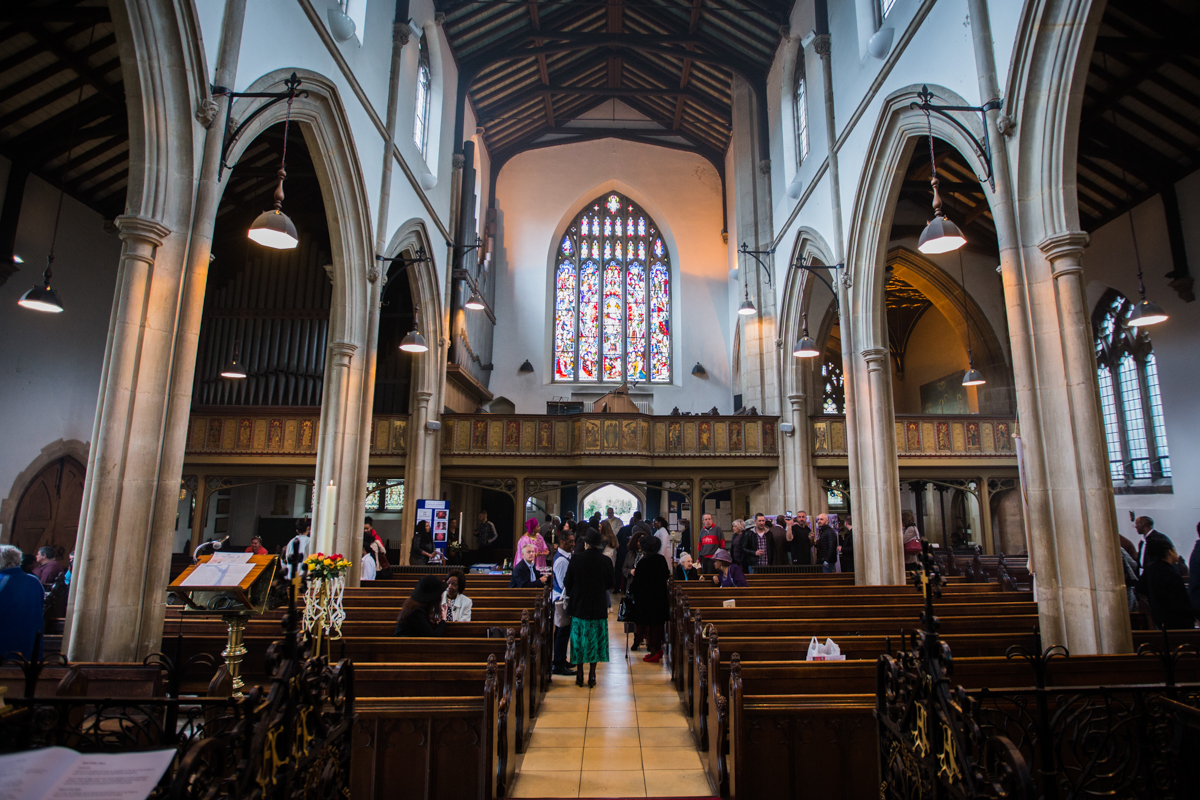|
The Willis Organ
Built in the West End of London, in 1847, St. Andrew's Wells Street(off Oxford Street) was renowned for its musical tradition, with its own choir school and full cathedral type services. Charles Gounod visited the church when he was in London to hear music which he had specially composed; Silas, Tours, Macfarren and Sullivan also went there for similar reasons. The choir produced some famous singers, notably Edward Lloyd. the great English tenor. The organists of S.Andrew's Wells Street inclued some famous musicians, the first being Richard Redhead (1847-1859), then Philip Armes (later at Durham Cathedral), Joseph Barnby (retired 1871), FAW.Docker (1871-1916), P. Mavon Gibbs, M.P. Conway (later at Chichester & Ely Cathedrals), and R. Meyrick-Roberts (1920-1933). |
||||
|
The first organ to be built in the church was by Hill. This was replaced by Henry Willis in 1876, and three stops from the Hill organ were retained in the new instrument - the stopped diapason on the great, the cornopean on the swell, and the pedal 16ft. open, on account, it is recorded, of their beauty and "fulness of tone". The great stopped diapason was incorporated at the request of Gounod, as when played in rapid arpeggio it gave a passable imitation of a harp, but neither this stop nor the swell cornopean were incorporated in the rebuilt organ at Kingsbury in 1934. The specification of the organ in Wells Street was as follows: |
||||
|
GREAT |
||||
|
Double diapason |
||||
|
Open diapason |
||||
|
Open diapason |
||||
|
Stopped diapason |
||||
|
Claribel flute |
||||
|
Viola da gamba |
||||
|
Octave |
||||
|
Harmonic flute |
||||
|
Twelfth |
||||
|
Superoctave |
||||
|
Mixture (17 19 22) |
||||
|
Tromba |
||||
|
Clarion |
||||
|
SWELL |
||||
|
Lieblich bourdon |
||||
|
Open diapason |
||||
|
Lieblich gedackt |
||||
|
Salicional |
||||
|
Vox angelica |
||||
|
Gemshom |
||||
|
Piccolo |
||||
|
Mixture (17 19 22) |
||||
|
Hautboy |
||||
|
Vox humana |
||||
|
Contra fagotto |
||||
|
Comopean |
||||
|
Clarion |
||||
|
Tremulant |
||||
|
|
||||
|
In 1933-34 S.Andrew's was removed stone by stone from Wells Street and was rebuilt in Kingsbury. The side galleries were removed, and the organ was rebuilt by Willis, and placed on the south side of the remaining west gallery. In Wells Street the organ had occupied a position in the north-east corner of the church, above the present Lady Chapel. The organ was reduced from three to two manuals in the move, and a detached console provided, originally facing west, but later rotated to its present position. |
||||
|
GREAT |
||||
|
Double open diapason (metal) |
||||
|
Open diapason no.1 (metal) |
||||
|
Open diapason 110. 2 (metal) |
||||
|
Claribel flute (wood) |
||||
|
Dulciana (metal) |
||||
|
Principal (metal) |
||||
|
Lieblicli flute (metal) |
||||
|
Twelfth (metal) |
||||
|
Fifteenth (metal) |
||||
|
Swell to great |
||||
|
Swell to great octavea |
||||
|
Swell to great suboctave |
||||
|
SWELL |
||||
|
Open diapason (metal) |
||||
|
Lieblich gedackt (metal) |
||||
|
Viola da gamba (metal) |
||||
|
Vox angelica |
||||
|
Gemshom (metal) 4 |
||||
|
4 Concert flute (metal) 4 |
||||
|
Mixture (15 19 22) (metal) |
||||
|
Contra hautboy (metal) |
||||
|
Trumpet (metal) |
||||
|
Clarinet (metal) |
||||
|
Swell octave |
||||
|
Swell suboctave |
||||
|
Swell unison off |
||||
|
Trem |
||||
|
On the swell organ, the viola da gamba is from the old choir organ, with the old swell vox angelica as the beating rank. Of the flutes, the lieblich gedackt is the old swell stop, while the 4ft. concert flute is from the choir organ. The clarinet is a delightful stop, again from the old choir organ - its position on the swell now effectively limiting its accompaniment to the great dulciana, itself an old choir organ stop. The trumpet is the old great tromba, and is a dominant voice not only on the swell but on the whole organ, providing an effective part of the swell chorus as well as having an effective solo role. The contra hautboy is the old hautboy with a new bottom octave added. The great organ now extends only to the fifteenth, with no mixture. It nevertheless shows a cohesiveness which can be augmented by the swell to mixture when necessary. The large open diapason is rather noble in quality, while the small open diapason provides an effective basis for the diapason chorus. The lower 2 1/2 octaves of the double open diapason are from the old pedal violone, which was in fact of a smaller scale than the original double diapason. The dulciana and the hieblich flute 4ff. are both from the old choir organ. On the pedal the violone stands in front of the organ facing north, and is in fact the bottom part of the original great double open diapason. The 8ft. stopped metal flute was a new stop in the rebuild, and the 4ft. octave flute is the old great harmonic flute. There are no derivations of 8ft. or 4ft. stops from 16ft. on the pedal, the only borrowing being the metal open diapason from the great, and the 16ft. trombone - the upper 18 notes are borrowed from the swell trumpet, while the lowest octave is from the old ophicleide, all enclosed in the swell box. |
||||
